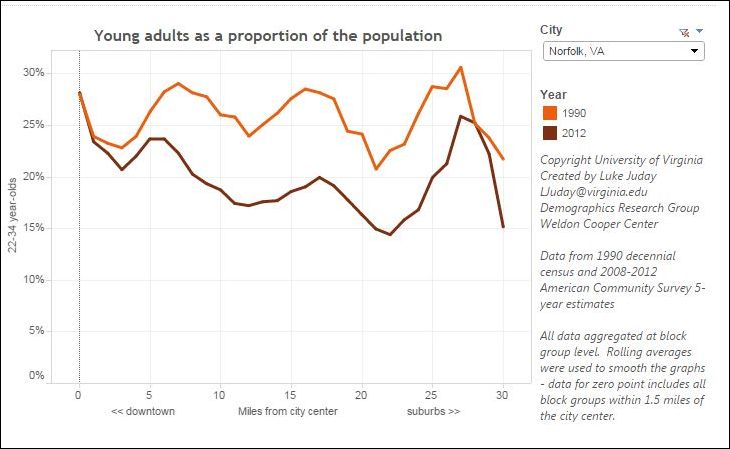by James A. Bacon
The debate still rages over the extent to which young Americans, especially members of the Millennial generation, are moving back to the urban core. Data published by Luke Juday on the StatChat blog should settle that question once and for all. The only questions worth pondering is why they are moving, and how many will move back to the burbs.
The chart above shows the proportion of Millennials living at varying distances from downtown Washington, D.C. In 1990, there was a weak tendency for young adults (defined as 22- to 34-year-olds) to live in the urban core but it was not pronounced. By 2012, however, the next generation of post-college young people had shifted markedly to the urban core.
The chart below shows Richmond.
In Norfolk, where the distribution of young military-age people in military facilities is determined largely by the location of military bases, the shift is less evident.
While the change is preference is dramatic, it is important to note that a large number of young people still resided miles from the city center in 2012. It’s not as if the suburbs are emptying of young adults. But even a modest shift in locational preference can drive the demand for new construction.
Juday, a Millenial himself, suggests a couple of reasons for the shift. Millennials have worse job prospects than previous generations at the same age and are saddled with greater student loan debt. As a consequence, they are less likely to take on mortgages for single-family dwellings in the suburbs. They’re also postponing marriage and child-bearing, which diminishes the incentives to move to suburban school jurisdictions with better schools. In keeping with their more modest economic prospects, Millennials place less emphasis on home ownership, automobile ownership and driving; they prefer walkable urban neighborhoods.





